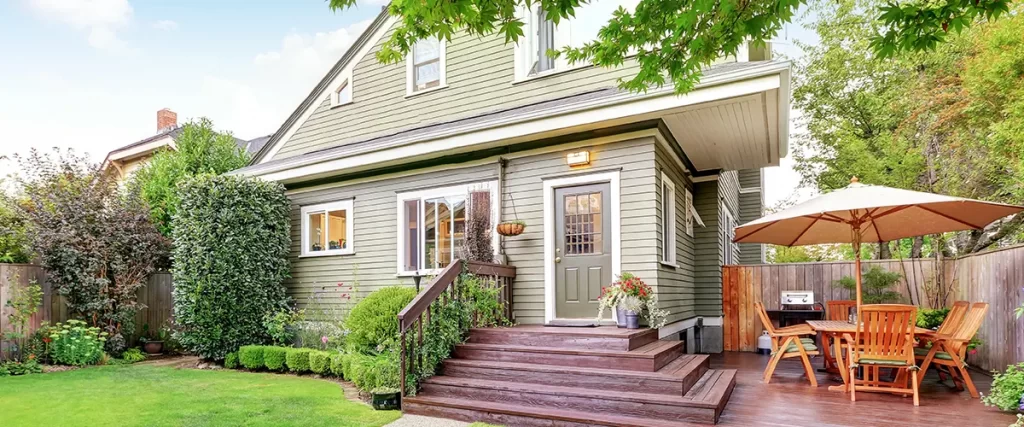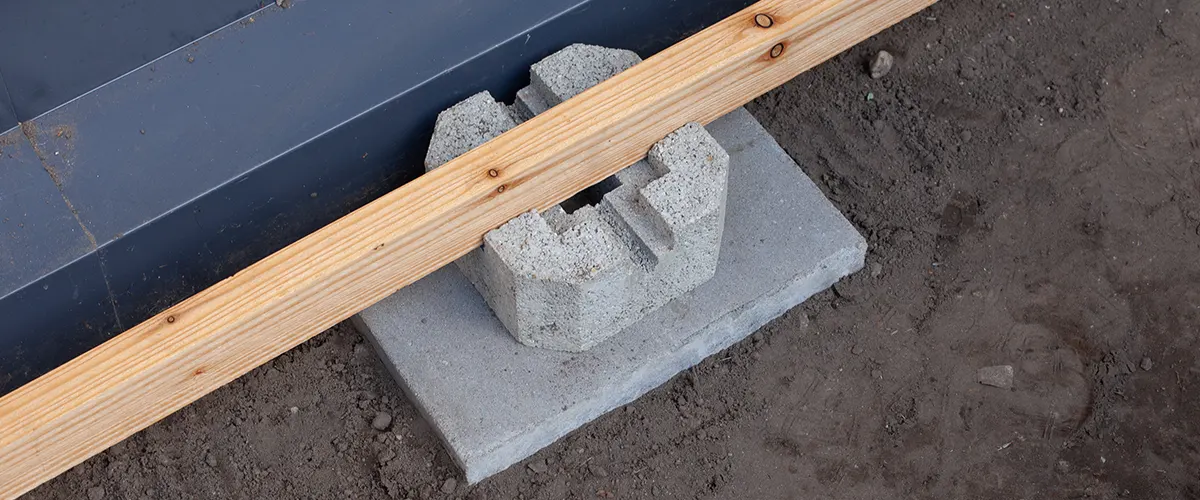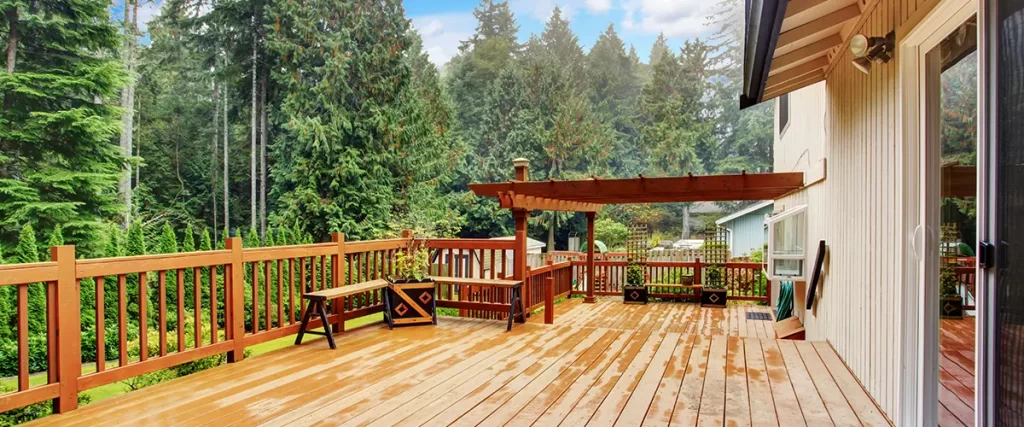When building a deck, the type of footings you use is an important decision. There are many different types of deck footings, each with its own set of pros and cons.
This blog post will discuss five types of deck footings: poured concrete footings, buried post footings, precast cement footings, deck blocks, and screw/helical piles.
We will break down the pros and cons of each type so that you can make an informed decision about which one is right for you!

What are deck footings and what do they do for your deck?
A deck footing is the foundation of your deck. It is a large, concrete foot that is buried in the ground and supports the weight of your deck.
Deck footings are an important part of your deck. They provide the necessary foundation and stability for your deck. There are several types of deck footings to choose from, so selecting the right one is important.
This is an important part of building your deck because it ensures its safety and stability. Be sure to consult with your local building codes before selecting a deck footing type. But before you do that, let’s dive deeper into the pros and cons of each type.

The 5 types of footings you can choose from
Poured Concrete Footings
Poured concrete deck footings are the most common type of deck footing. They are usually used for decks that are larger or taller than average. Poured concrete footings involve digging a hole in the ground and then pouring concrete into it. The concrete should be poured to a depth that is at least 12 inches below the frost line.
Once the concrete has hardened, the deck can be attached to the footings. Poured concrete footings provide a lot of stability and support for your deck. They are a good option for decks that are located in areas with cold winters.
Pros of poured concrete footings
- Poured concrete footings are the most common type of deck footing
- They provide a lot of stability and support
- They are a good option for decks that are located in areas with cold winters
Cons of poured concrete footings
- They can be expensive to install
- They require a lot of labor and time to install
- They can be difficult to repair if there is any damage
Buried Post Footings
Buried post deck footings involve burying four posts in the ground and then attaching the deck to the posts. This is a good option for decks that are not very large or tall. The depth of the post footings will depend on the frost line in your area.
The deck should be attached to the posts with carriage bolts or lag screws. This type of deck footing is not as common as poured concrete footings, but it is a good option for decks that are located in areas with unstable ground.
Pros of buried post deck footings
- They are a good option for deck posts that are not very large or tall
- The depth of the post footings will depend on the frost line in your area
- The deck should be attached to the posts with carriage bolts or lag screws
Cons of buried post deck footings
- They are not as common as other types
- They can be expensive to install
- They can be difficult to repair if there is any damage

Precast Cement Footings
Precast cement block footings are a popular choice for smaller decks. They are easy to install and do not require any digging. Precast deck footings are made out of cement and come in different shapes and sizes.
The most common type of precast deck footing is the pier deck footing. Pier deck footings involve setting a concrete pier in the ground and then attaching the deck to it. This type of deck footing is easy to install and does not require any digging.
Pros of precast deck footings
- They are quick to install
- They do not require any digging
- They come in different shapes and sizes
Cons of precast deck footings
- They require special labor for lifting, moving and arranging the precast units.
- They can be expensive to install
- They can be difficult to repair if there is any damage
Deck Blocks
Deck blocks are a good option for decks that are being built on a concrete slab. Deck blocks are made out of concrete and come in different shapes and sizes.
The most common type of deck block is the square deck block. Square deck blocks are easy to install and do not require any digging. They are also less expensive than other types of deck footings.
Pros of deck blocks
- They are easy to install
- They do not require any digging
- Are less expensive than other types of deck footings
Cons of deck blocks
- They can be unstable. If you live in an area with unstable ground, deck blocks may not be the best option for you.
- They are not as common as other types of deck footings

Screw/ Helical Piles
Screw/helical piles are a good option for decks that are located on soft soil or unstable ground. They are made out of steel and are driven into the ground with a hydraulic screwdriver.
This type of deck footing is more expensive than other types of deck footings, but it is a good option for decks that are located in areas with unstable ground.
Pros of screw/helical piles
- They are a good option for decks that are located on soft soil or unstable ground
- They are durable
- They are driven into the ground with a hydraulic screw driver
Cons of screw/helical piles
- They are more expensive than other types of deck footings
- They require a lot of labor and time to install
- They can also be difficult to repair if there is any damage
Conclusion
We hope this article has helped you understand the basics of deck footings, the pros, and cons of each type so that you can know which one can suit your needs the best. If you’re still unsure, get in touch with us! Our experts are ready to help guide you through your next project or answer any questions that may arise during construction.


